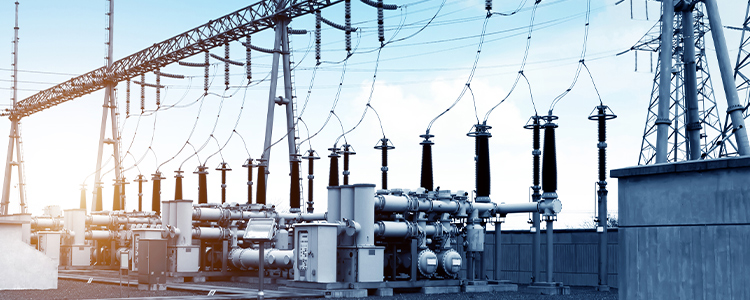- All
- Product Name
- Product Keyword
- Product Model
- Product Summary
- Product Description
- Multi Field Search


Views: 0 Author: Site Editor Publish Time: 2025-06-07 Origin: Site
The magnetic circuit is an important component of the transformer core, which is a laminated or wound structure that provides a low magnetic resistance path for the main magnetic flux generated by the excitation winding. A part of the iron core is surrounded by windings, called the iron core column; The part that is not surrounded by windings is called an iron yoke.


The cross-section of the iron core column of a small transformer is generally rectangular or square, while the cross-section of the iron core column of a large transformer is generally made into a stepped polygon to approximate a circle, to fit the winding, as shown in the following figure:


The characteristic of a heart type transformer is that the iron yoke is placed against the top and bottom of the winding, without surrounding the side of the winding:


The characteristic of a shell transformer is that the iron yoke not only surrounds the fixed section and bottom surface of the winding, but also surrounds some of the side surfaces of the winding:


A laminated iron core is made by stacking silicon steel sheets cut into a certain form. The iron core generally adopts a staggered stacking method, and the joints between adjacent layers should be staggered. Most laminated transformers use cold-rolled silicon steel sheets with grain orientation as the iron core. This type of steel sheet has less loss and higher magnetic permeability along the rolling direction. The three-phase oblique slot iron core laminations are located at the magnetic circuit corner, which can reduce iron loss.
Double layered staggered stacking of rectangular silicon steel sheets:


Diagonal seam silicon steel sheet staggered stacking:


So, the air gap between the laminations connected between the iron core column and the iron yoke is overlapped by the laminations of the next layer. Therefore, when stacked on top of other stacks, there is no continuous gap at the connection:


The overlap angle of the direct seam is 90 °, which is relatively simple to manufacture. However, due to the fact that the magnetic flux does not follow the direction of grain orientation, the loss in the angle is relatively high, and it is generally used for small transformers; In oblique joints, the overlap angle is usually 30-60 °, and the magnetic flux passing through the joint is oriented in the direction of grain orientation to minimize losses.
In addition, the performance of the stepped overlap connection method is superior to that of the staggered overlap. In the following figure, the working magnetic flux density of the iron core is designed to be 1.7T. For staggered overlapped iron cores, the magnetic flux density at the joints rises to 2.7T (heavy saturation), while the magnetic flux density in the air gap is about 0.7T. In stepped overlapped iron cores, the magnetic flux density in the air gap is about 0.04T, and the magnetic flux density at the joints is close to 2.0T.


In the iron core structure with iron yoke screws, there are punched holes in the iron yoke laminations. The magnetic flux distribution in the hole area will be distorted, resulting in increased losses in the iron core. Therefore, the iron core structure of the iron free yoke screw has better performance, and a special clamping structure composed of glass fiber/stainless steel strip can be used. To strengthen the bonding between different laminates, epoxy resin needs to be used at the edges, which can also reduce transformer noise.


Amorphous alloy transformer is an energy-saving transformer. Taking iron-based amorphous alloys as an example, they have the characteristics of high magnetic permeability, low coercivity, high saturation magnetic induction intensity, low hysteresis loss and eddy current loss. Amorphous alloy materials also have characteristics such as corrosion resistance, wear resistance, high toughness, and sensitivity to mechanical stress, so their magnetic properties will be affected by stress.
The flat coil iron core transformer is continuously rolled from silicon steel sheets, with seamless iron cores, greatly reducing magnetic resistance and reducing no-load current by 60-80%. Continuous winding fully utilizes the orientation of silicon steel sheets, reducing no-load losses by 20-35%. After annealing, the magnetic conductivity of the rolled iron core can be restored to its original level before machining.


The three-dimensional coiled iron core transformer is an energy-saving power transformer, with a completely symmetrical three-phase magnetic circuit and a completely balanced three-phase no-load current. The magnetization direction of the three-dimensional coil iron core is completely consistent with the rolling direction of the silicon steel sheet, and there are no lap joints between the layers of the iron core. The magnetic flux distribution throughout the magnetic circuit is uniform, without obvious high resistance areas or distortion of magnetic flux density at the joints.

